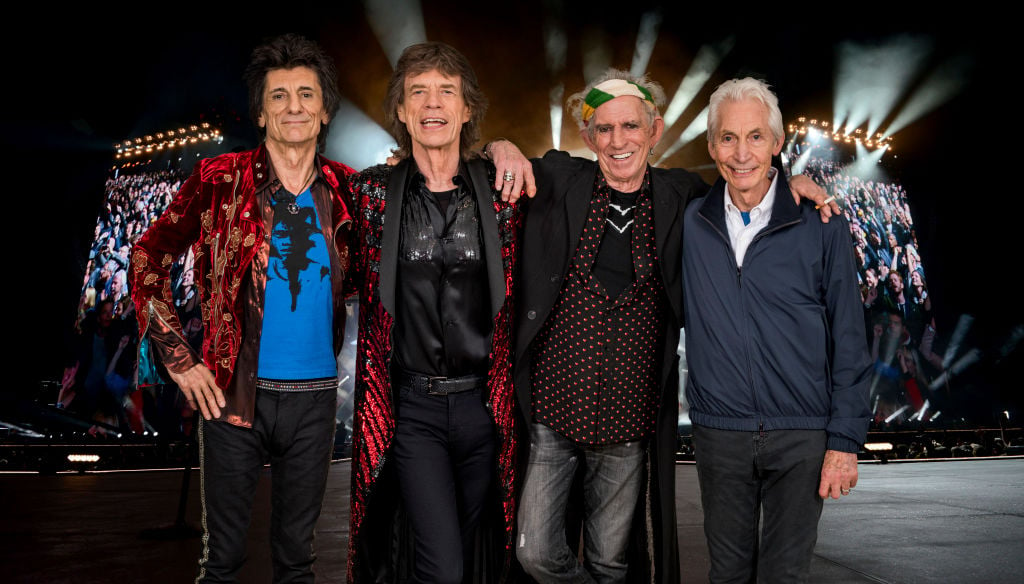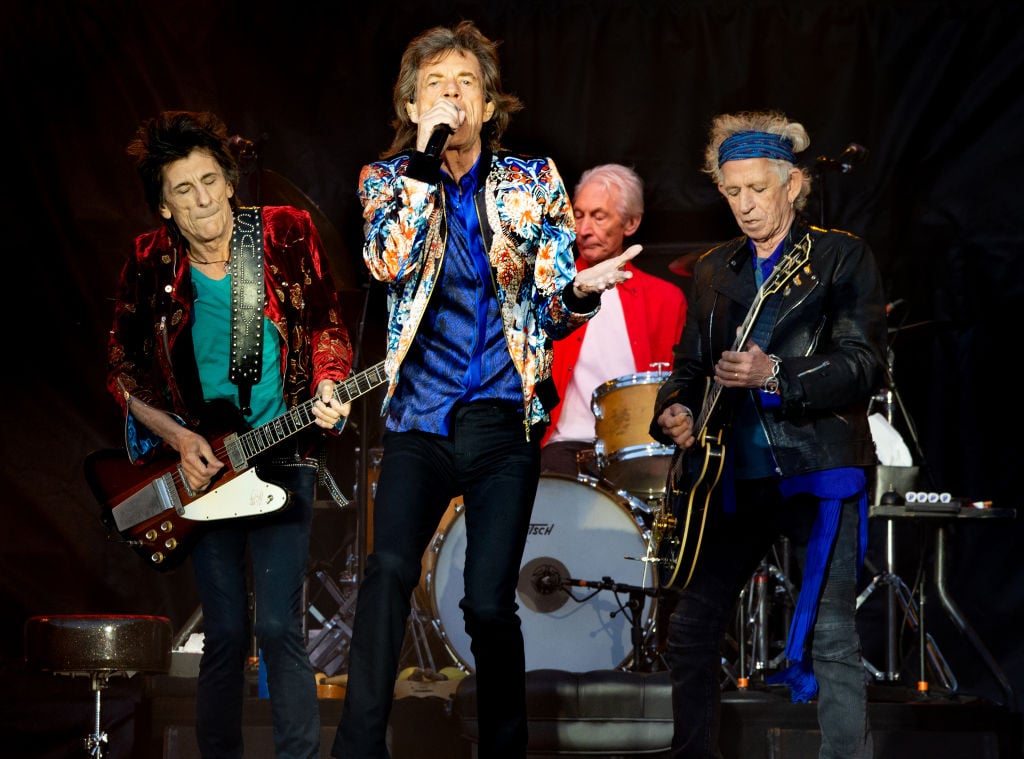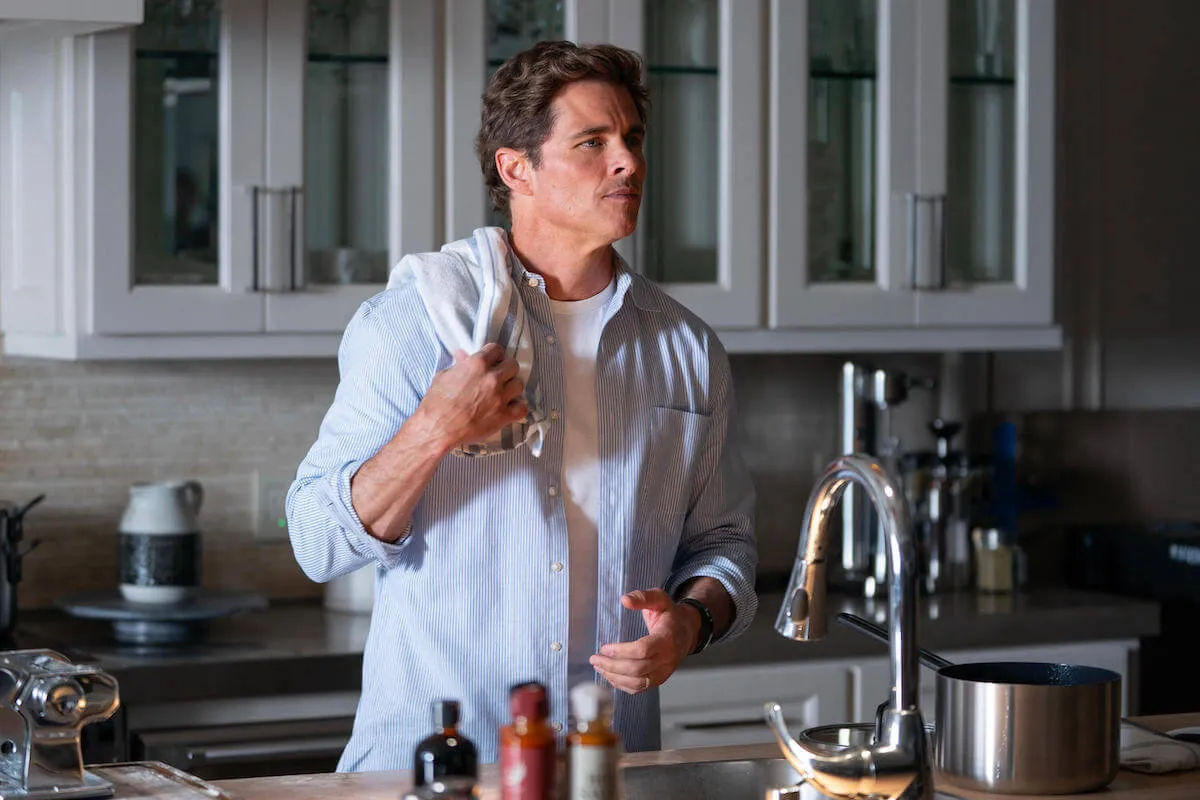How Many No. 1 Hits Does Mick Jagger Have with the Rolling Stones?
The Rolling Stones are a transcendent band. Ask someone over the age of 60 about the Rolling Stones or a 30-year-old and you’ll likely get the same response: an interest in the band and a show of respect for their longevity.
So, how many no. 1 hit songs does Rolling Stones lead singer Mick Jagger have with the band? We break it down ahead.
A note regarding this article: We focused on the Rolling Stones No. 1 hits on the Billboard charts.
‘(I Can’t Get No) Satisfaction’
The first Billboard chart-topping hit for the Rolling Stones didn’t come until 1965, one year after they entered the Billboard charts with their song “Not Fade Away,” which made it to No. 48 on the charts in July 1964, according to Billboard.
“(I Can’t Get No) Satisfaction” gave the Rolling Stones their first No. 1 hit on the Billboard charts on July 10, 1965. Decades later, the track is still one of their most well-known songs.
In 1990, Snickers acquired the rights to “(I Can’t Get No) Satisfaction” as part of a commercial to go along with their slogan, “Snickers Satisfies,” according to Entertainment Weekly.

”We turned them down and turned them down,” Allen Klein, president of music publisher ABKCO, which owned the rights to the song as of 1991, told Entertainment Weekly.
Eventually, ”they offered us an amount I felt was difficult to refuse,” Klein said. Studio musicians performed the song for the Snickers commercial, which earned the song’s writers $4 million (Mick Jagger) and $2.8 million (Keith Richards).
The song earned the No. 2 spot on Rolling Stone magazine’s list of the greatest Rolling Stones songs as chosen by experts.
‘Get Off of My Cloud’
The second time the Rolling Stones made it to No. 1 on the Billboard charts came in Nov. 1965. Their song, “Get Off of My Cloud” spent two weeks at No. 1. starting on Nov. 6, 1965.
“‘Satisfaction’ was a great record. ‘Get off of My Cloud,’ even better record,” Neil Young wrote in his biography, Shakey, according to Rolling Stone magazine. “Looser, less of a hit. More of a reckless abandon.”
“Get Off of My Cloud” earned the No. 12 spot on Rolling Stone magazine’s list.
‘Paint It, Black’
Seven months after “Get Off of My Cloud” came “Paint It, Black.” This hit song also spent two weeks in the No. 1 spot on the Billboard charts in June 1966. The song took the No. 6 spot on Rolling Stone magazine’s list.
“It was a different style to everything I’d done before,” Richards said, according to Rolling Stone. “Maybe it was the Jew in me. It’s more to me like ‘Hava Nagila’ or some Gypsy lick. Maybe I picked it up from my granddad.”
It’s also noted that the record company accidentally added a comma to the name.
‘Ruby Tuesday’
In 1967, the Rolling Stones had a No. 1 hit for one week on the Billboard charts in March. Written by Richards, the inspiration for “Ruby Tuesday” came after his girlfriend, Linda Keith, broke up with him for Jimi Hendrix.

Jagger commented on the song years later, saying “It’s just a really nice melody, and a really nice lyric […] Neither of which I wrote. But I always enjoy singing it.”
“Ruby Tuesday” took the No. 19 spot on the Rolling Stone magazine list.
‘Honky Tonk Women’
The Rolling Stones would have to wait another two years for their next chart-topping hit. It came on Aug. 23, 1969, when “Honky Tonk Women” hit No. 1 on the charts. It remained in the top spot for four weeks straight.
“It was a groove, no doubt about it, and it’s one of those tracks that you knew was a Number One before you’d finished the motherf***er,” Richards later said of the song.
‘Brown Sugar’
Another two years went by until they got another No. 1 song. In May 1971, their song “Brown Sugar” put them at the top of the charts again. It stayed in the No. 1 spot for two weeks.
The band recorded “Brown Sugar” at Muscle Shoals Sound Studios in Sheffield, Alabama, and performed the song for the first time live at Altamont days later. It too made Rolling Stone magazine’s list of the top 100 Rolling Stone songs, earning the No. 8 spot.
‘Angie’
“Angie,” a track from the 1973 album, Goats Head Soup, earned the Rolling Stones the No. 1 spot on the Billboard charts on Oct. 20, 1973. Not only did the song make the top spot on the American charts but it landed the No. 59 spot on the greatest Rolling Stones songs according to Rolling Stone magazine.
Richards wrote “Angie” while being treated for heroin addiction in Switzerland. He later talked about writing the song.
“I didn’t know Angela was going to be called Angela when I wrote ‘Angie,’ ” Richards said. “Sometimes you have a hook, a phrase or a word or a name or something, which maybe you don’t even intend to keep. . . . It was just a working title, like, who’s gonna call a song ‘Angie,’ how boring, another chick’s name, ya know.”
‘Miss You’
It would be another five years until the Rolling Stones would have another hit song on the Billboard charts after “Angie.” The draught broke on Aug. 5, 1978, when “Miss You” topped the charts.

“Miss You” came about in 1977 when the band played a club show while waiting for the verdict on Richards’ drug charges. Jagger and Billy Preston, a keyboardist who toured with the band, started working on a new song. “Billy had shown me the four-on-the-floor bass-drum part, and I would just play the guitar,” Jagger said.
“It was, ‘Aah, Mick’s been to the disco and has come out humming some other song.’ It’s a result of all the nights Mick spent at Studio 54,” Richards said.


